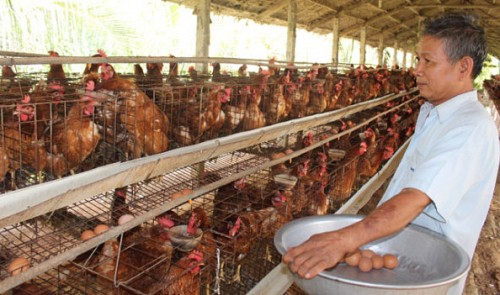TPP could be last straw for foreign-dominated Vietnamese meat sector: insiders
TPP could be last straw for foreign-dominated Vietnamese meat sector: insiders
With Vietnam’s meat market already flooded with foreign products, local enterprises are worried that the Trans-Pacific Partnership (TPP) agreement will be the last straw to put them out of business, as all of the current tariffs will be eliminated once the trade pact takes effect.

Vietnamese meat, dairy and cattle firms are expected to take the biggest hit from the TPP among the livestock industry, as they will be unable to compete with much stronger rivals, according to local experts.
Six out of the 12 TPP nations, including Japan, Canada, Australia, New Zealand, Mexico and the U.S., currently make up 30 percent of the global beef supply, and are among the world’s ten largest beef exporters.
The other six countries participating in the ambitious trade pact, whose negotiations were concluded on Monday in Atlanta, are Brunei, Singapore, Malaysia, Chile, Peru and Vietnam.
In 2014 Vietnam imported 200,000 live cows from Australia, and thousands of tons of frozen beef from Japan, Canada, Australia and the U.S.
The Southeast Asian country is expected to continue to be a lucrative market for these beef-exporting nations once the TPP is in place.
The pact, which would liberalize trade in 40 percent of the global economy, is pending approval by the legislative body of each participating nation. The ratification process in Vietnam may begin in 2016 and take 18 months to complete.
The outlook is no brighter for the domestic poultry sector in Vietnam, at a time when the market is already full of products imported from the U.S. sold at dirt cheap prices despite the current tax barriers.
All import tariffs on poultry will be slashed to zero as per the TPP roadmap.
“I don’t think we will be able to maintain operation then, let alone compete with imported products,” L., the director of a Ho Chi Minh City-based poultry firm, lamented.
Vietnam is expected to have ten years to restructure its livestock sector before the livestock tariffs are eliminated, according to the Ministry of Industry and Trade.
But L. doubts that a decade of preparation would help.
“It is hard to anticipate any positive solutions for the Vietnamese livestock sector to survive the TPP,” he said.
The Vietnamese livestock industry thus has to start changing and improving immediately to be able to take the opportunities and overcome the challenges that follow the TPP, according to experts.
Vietnam does have strengths and should take advantage of these for improvement, analysts said.
For instance, the chicken breeding sector currently has the most competitive production costs in Southeast Asia and will be able to compete with rivals from the TPP countries if effective and timely measures are enacted.
“We must pay close attention to improving the breeder quality and curbing trade frauds,” said Nguyen Van Ngoc, deputy chairman of the Animal Husbandry Association in southeastern Vietnam.
Vietnam currently has a sow herd of four million, which is the world’s third largest and behind only the U.S. among the TPP nations.
However, Vietnam’s pork production only ranks seventh in the world, with an output of only 2.5 million metric tons of the meat last year.
“If the quality of the breeders is improved, we can cut production costs and strengthen the competitiveness of Vietnamese pork,” the director of a pig company in the southern province of Dong Nai said.



















